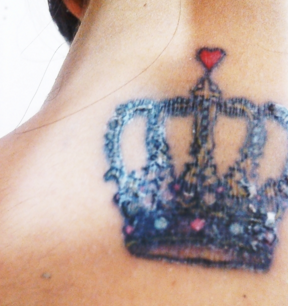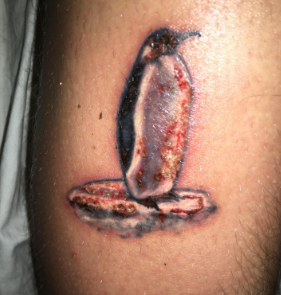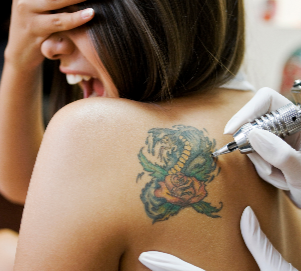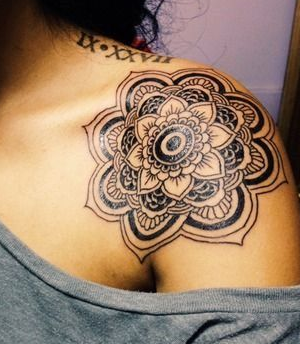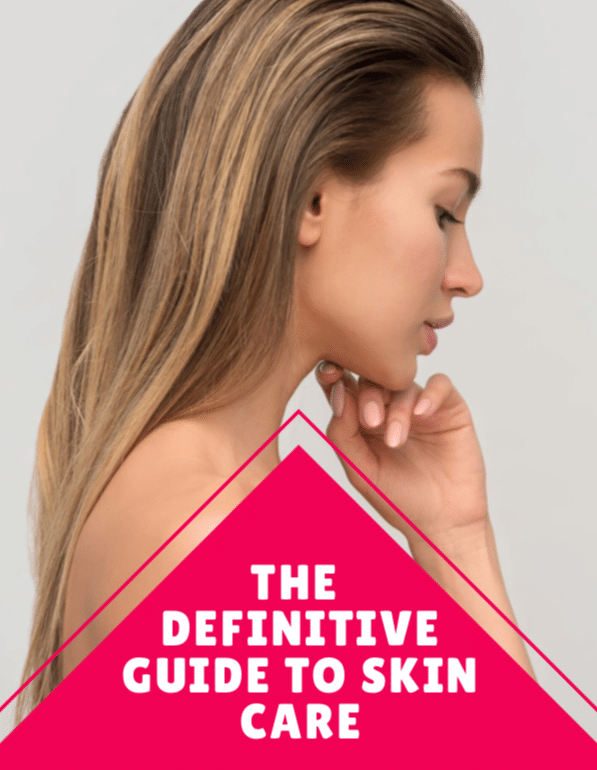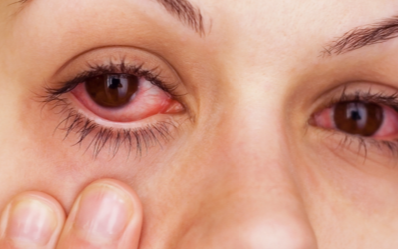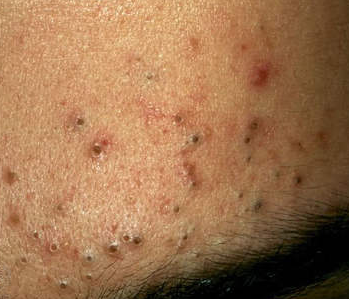A critical look at the tattoo healing stages, scabbing, peeling and the problems as well as the after care products of the tattoos.
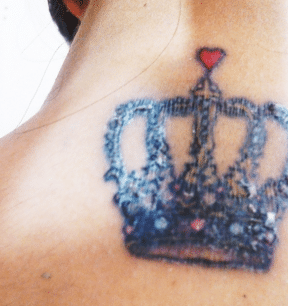
tattoo healing stages
Tattoo Healing Stages
During the tattoo healing process the tattoo should be treated right to avoid experience of infections or loss of color. There are a few tattoo healing stages of tattoo healing and after care tips to ensure a good looking tattoo. Remember that the total healing time required for a tattoo to completely heal ranges from three to four weeks.
Stage one
This stage begins as soon as the tattooing has been finished which would initially be treated as an open wound. You are supposed to cleanse the area around the tattoo at least twice a day and applying fresh bandages after each cleansing. The bandages will be important as they catch any fluids and excess ink.
During this stage, the tattoo will be swollen and red on the edges, you might find bruises around the area. This is normal and indicates that the tattoo is healing. Scabs will start forming over the tattoo and thus it is not important not to pick. Use a gentle soap to cleanse the area. This is the most initial of tattoo healing stages.
Stage two of healing
The tattoo starts to be itchy. The stage is approximately a week. The stage is also annoying and indicates the skin naturally recovers. The skin takes about a week for the skin to start regenerating. About four days after the start of the itching the skin will start to peel making the itch to worsen.
The tattoo will look as if translucent or with a white film which is a layer of the healing skin that hasn’t absorbed the same amount of ink.
Stage three of healing
This is the final stage of the tattoo healing process. The tattoo appears mostly healed.
At this stage, all the scabs are gone and the ink should be settled. The main tattoo is however, deep in the skin. The tattoo will start to look very vibrant and this is normal for the final stage of the tattoo healing.
It is advised that you continue cleansing the tattoo and even lotion the tattoo at least twice in a day to prevent the tattoo from overdyeing. Do not attempt to peel off the final layer as it may damage the tattoo.
Moisturizing will take care of the over drying naturally and may encourage the remaining scabs to fall off on their own. If the skin is very dry, then you can also moisturize it mote often to reduce this.
Tattoo Healing Process
Before you think of having that tattoo healing, you should ensure that you chose a tattoo artist who is reputable so that you get a tattoo that you are proud of. How to care for your tattoo is equally important during the tattoo healing stages as even a good quality tattoo can be ruined by poor aftercare.
Though the guidelines will vary from one artist to another but the overview of it all is that you try to keep that tattoo clean, bold and clear.
- Listening to the tattoo artist
After doing a thorough research about the best artist in town and chosen him or her, he will provide instructions on how the tattoo can be cared, instructions that you should keenly follow. Every tattoo artist will have a different opinion on the best after care but the important thing is ensuring that you follow the instructions carefully as required.
Due to the many years of experience for many tattoo artists, they will be able to advice you on the methods that have been tried and tested.
After you finish being tattooed, think of the tattoo as having a warranty, if you keenly follow the instructions of the artist then he will give you free touch ups
Also remember that the tattoo artist will also want the work of his hands to heal correctly and look good, the same way you will also want it perfect, so they will not give you poor advice
As much as the instructions will vary from one artist to another, the advice should act as a guideline for the healing of the tattoo.
- Leave the covering for up to 6 hours
Once the procedure has been finalized, the artist will clean the area with an anti-bacterial ointment and cover the tattoo area with a bandage or any other dressing. Avoid the urge to undress the area as it protects you from the airborne bacteria that can penetrate through your broken skin.
The bandage should be left on for about 6 hours before you remove it.
Thick, non-absorbent ABD wound dressings are the most common type of the bandage that your artist may use because they are very effective and allows the tattoo to breathe while also being very thick to protect effectively the skin from the bacteria and bumps as much as they are extremely absorbent.
While there are very many tattoo artists who believes in wrapping the wound in plastic wrap, there are also others who believe that this is the worst form of aftercare ever that you could do for the tattoo
Proponents of the plastic wrap strongly believes that it is the best way to wrap new tattoos in plastic wraps without sticking it to the skin. That it also forms effective shield that blocks the bacteria from getting near the tattoo.
The opponents of the plastic wrappings believe that the plastic wrappings prevent oxygen from getting to the tattoo and that oxygen is essential. It also seals in moisture and raises the temperature of the skin creating the perfect environment for the growth of the bacteria.
But the important thing is however, whichever covering that the artist may decide to use, just be sure to follow his advice as much careful as you can. Both types of covers have successfully as before. Remember that plastic wrap has to be changed and the tattoo should be cleaned more frequently than with other bandaging so that the bacteria will not build up.
- Careful removal of bandage
Depending on the advice of the tattoo artist on how long the bandage should remain in place, most artists agree that the tattoo should be covered for at least 2 hours before the removal but the recommended time varies from 4 to 6 hours.
Tattoos covered in plastic wrap are the exception as plastic wrap should never be left on new tattoo for longer than 2 hours.
However, in reality, the amount of time required before the removal of the bandage depends on size and placement of the bandage as the level of tattoo seepage and type of bandage that was used. It is still important to follow the advice of the tattoo artist but you should also use common sense
To remove the bandage, soak it carefully in warm water as this prevents it from sticking to the skin and comes out easily once wet. Discard the used bandage.
- Gentle washing of the tattoo
It is recommended that lukewarm or mild water is used in all the tattoo healing stages. You can also use unscented anti-bacterial soap as it helps to prevent the tattoo from scabbing too soon. Do not use any washcloth or sponge to clean the tattoo as it may contain the bacteria eventually spreading it to the tattoo.
Avoid holding the tattoo directly under the water. Wash the tattoo indirectly by splashing water over the tattoo with your hands. The stream and force of the water from the faucet may be too harsh for the new tattoo, if it covers a large of the body, then it would be recommended that you wash the tattoo in the shower
- Patting the tattoo dry
After thoroughly washing the tattoo, then you should pat gently with a little paper towel. Rubbing should be avoided as it irritates the tattoo. Once the excess moisture has been done away, then you should leave the tattoo uncovered for about 1 hour to allow the tattoo breath and any moisture that was excess to evaporate.
- Application of unscented water based antibacterial ointment
Once the skin starts to feel dry, then you can gently apply a little ointment to the tattoo. Make sure that you only apply on a thin layer that is enough to make the tattoo shine and gently rub so that the ointment is absorbed by the skin. Don’t apply too much ointment
Ointment application should be at least 2 times a day after washing for 3 to 5 days until the peeling of the tattoo starts to peel.
Don’t use petroleum based products like Vaseline as they too heavy and may clog the pores causing tattoo breakouts. They also draw the tattoo ink causing it to fade before the healing
- Wash and moisturize the tattoo twice daily
Wash the tattoo continuously until with an antibacterial soap until the tattoo is fully healed. This can take up to 6 weeks depending on size as well as the location of the tattoo. Tattoos should be washed to approximately 3 times a day though should be washed more on areas that are easily exposed to germs.
Tattoo Scabbing
Tattoos are supposed to scab at any stage of the tattoo healing stages and it is very normal for it to scab. When they are scabbing, don’t do anything.
Avoid;
- Picking of the heads
- Knocking off of the scabs mostly when you get out of the shower
- Scratching the tattoo even if it looks bad
- Submerging of the tattoo in water for a long period of time.
Tattoo Scabbing, After 1 Day, a Week
It is normal for scabbing to start occurring after any period of time of the tattoo healing stages within the agreed timelines.
Tattoo Thick Scabbing Badly
If you suspect the tattoo is infected, then you should consult a doctors who may prescribe antibiotics to help fight the infection.
Tattoo Scabbing and Peeling
Scabs may not necessarily imply that your tattoo is infected during the tattoo healing stages, though also the infected tattoo will also scab and weep fluid and even look red.
Tattoo Peeling Process
The scab serves the valuable purpose of protecting the wound from bacteria while white blood cells work vigorously underneath to kill any germs that get through the crusty layer. White blood cells also help heal and repair the new skin forming underneath.
After Tattoo Care
- Do not pick, scratch or pick at the tattoo as it may begin to scab. Scabs should be left normally to dry out and eventually fall off themselves at any stage of the tattoo healing stages. Do not help the process as it may cause the scabs to fall off prematurely leaving holes or light spots on the tattoo.
It may also cause the tattoo to be infected especially if the hands are unclean. Always remember to wash your hands with antibacterial soap before touching of the tattoo and never allow anyone else to touch the tattoo.
Scabbing and peeling off of the skin can sometime be very itchy but remember that scratching can lead to falling off of the scabs, you can relieve the itchiness by slapping with a flat of the hand or by rubbing with a little lotion.
Moisturize the ointment to combat the itchiness if it is the problem.
- Do not soak the tattoo by avoid various things that will moisten the tattoo like swimming in the pool or sea or even in the bathtub. Exposing the tattoo to water may draw the ink out of the skin damaging the appearance of the tattoo.
Also, water may also contain dirt, bacteria or chemicals that can infect the tattoo
It is completely safe to resume the water activities once the tattoo is completely healed but you should stick to rinsing of the tattoo in the sink.
Keeps always baths short to approximately 10 minutes
- Avoid exposing the tattoo to direct sunlight as the harsh rays of the sun can cause the skin to bleach some of the colors from the tattoo. It is advised that you keep the tattoo covered and away from the sun for at least 6 weeks until the healing is completed.
After the healing, you still need to protect the tattoo by wearing something that will prevent the tattoo from fading in the sun and keeping the colors in place and for longer.
- Avoiding of tight fitting clothes is an important measure to ensure that your tattoo heals. As the tattoo heals, it sips the plasma and even the excess ink that can cause the clothing to stick to the tattoo. The clothing becomes painful to remove and can rip off the freshly formed scabs.
If the clothing sticks to the tattoo, do not pull but wet the area with water, it loosens the clothing and it can now be removed without damaging the tattoo.
Tight clothing also prevents enough oxygen that is essential for the healing of the tattoo, from getting to the tattoo
Always wear clean, loose fitting clothing all times while the tattoo is healing.
- Avoid working out your body as tattoos that cover large surface areas or near joints may take longer to heal especially if the skin is forced to move around too much especially during the intense workouts.
The movements causes the skin to be irritated hence prolonging the period of healing of the tattoos, thus you should avoid unnecessary physical activity.
If you are in a job that requires a lot of intense physical activity, you may consider having the tattoo done just before your days off duty so that it has time to heal before you resume duty
- Avoid washing of the tattoo with hot water as the hot water will open up the pores and may likely hurt the sensitive skin.
- After the healing process is done, then continue to apply tattoo goo periodically especially for the colored tattoo to enhance and even protect the color
- During the entire tattoo healing stages, always use a cold gel pack, it is the best alternative to the traditional ice pack.
- Avoid as much as possible sauna and steam rooms when the tattoo is healing as the moisture may draw the pigment from the skin
- Avoid shaving of the tattoo until the healing process is completed as the shaving cream or even hair may irritate and or infect the tattoo
- Do not cover the tattoo after the initial cover that the artist had applied was done after the tattooing since the tattoo requires air for the healing process to be successful. Plastic wrap will only suffocate the tattoo and thus prolong the healing process
At night when you are sleeping, do not lie on the tattoo side as the ink may come off. Also ensure that you lay a towel underneath to absorb excess ink that may drain when you are sleeping so that the ink do not stick on the bed sheets.
- Running an itchy tattoo under hot water for a few minutes will enable you have the comfort to sleep for a while without feeling the itchiness of the tattoo.
- Do not wear fluffy clothing as it may get into the tattoos scabs and cause an infection
- Cold may sometimes help get rid of the itch. Gently rest an ice pack on the tattoo.
- Do not leave the bandage wrap for more than hours as they start to cause the bacteria build up leading to an infection
- Diseases and viruses may be spread through the process of tattooing, remember to get services from a reputable shop.
- Avoid usage of such products as Neosporin as they are not meant for puncture wounds and they will cause the skin under and around the tattoo not to heal too quickly.
Tattoo Aftercare Products
It is sometimes hectic when choosing the right after care products for a tattoo during the tattoo healing stages. There are very many different products on the market. Here are the most popular products that will work well;
- Tattoo aftercare moisturizing lotion; most lotions have different use, so a person should be careful when choosing a lotion. Do not choose a lotion that has large amount of petroleum and alcohol as it will damage your tattoo. Do not use too much of any lotion. If the product is sensitive to your skin, then discontinue use and seek medical advice.
- Tattoo aftercare antibacterial lotion; some antibacterial lotions may also end up harming your skin as opposed to helping the healing of the tattoo. However if works well on your skin, apply a small amount on the skin and be conservative.
- Sunscreen; this is an essential lotion of the aftercare products, after the fading of the skin, there is no way for it to regenerate the original colors of the ink as the compounds that cause the colors are recycled by the cells of the skin.

